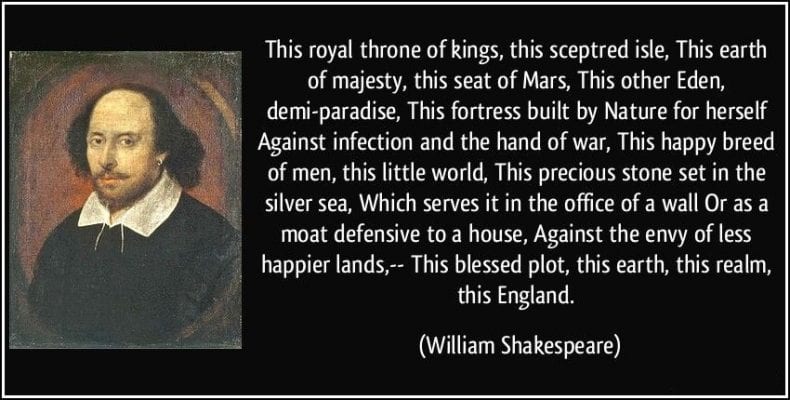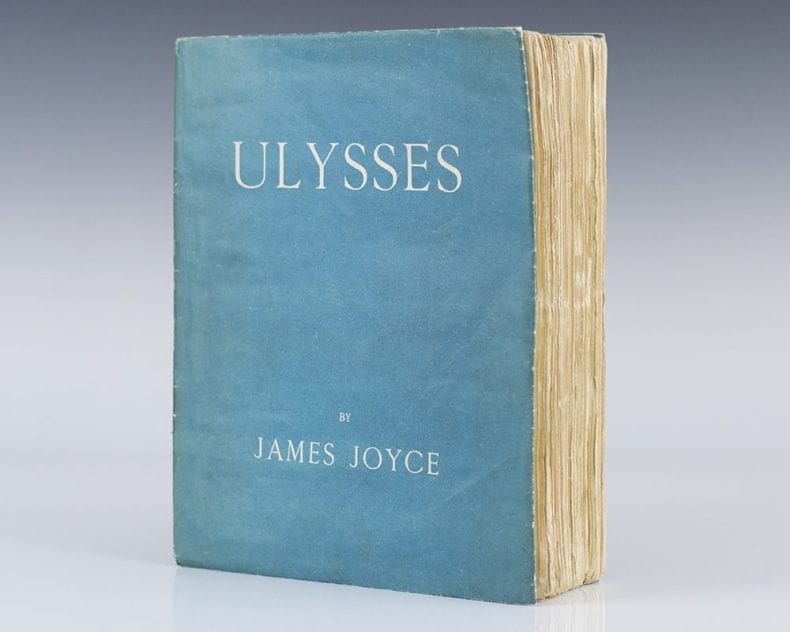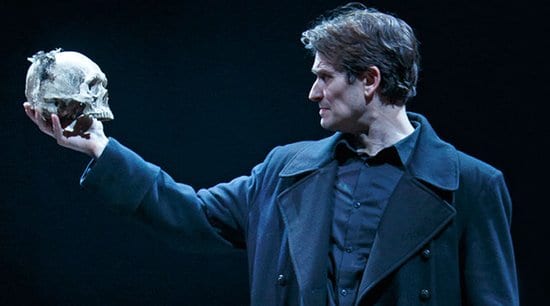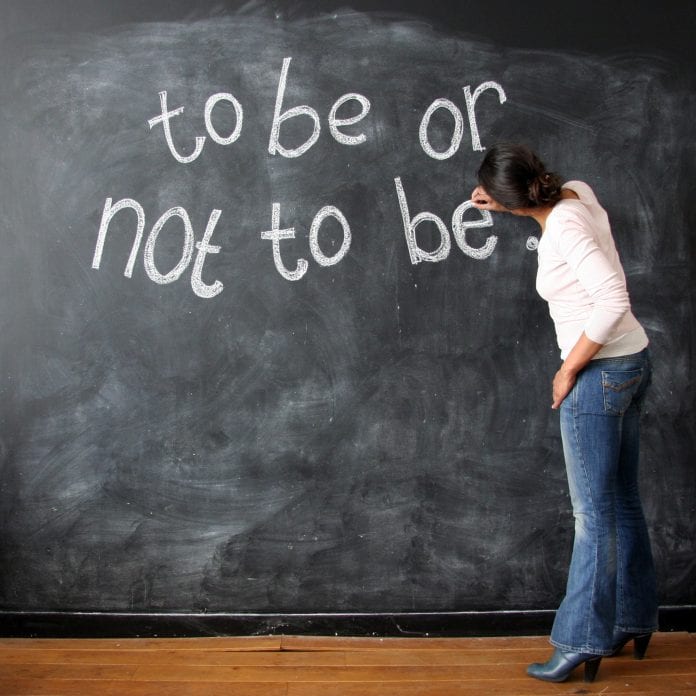Four hundred years after William Shakespeare’s death, “To be or not to be, that is the question” is the most-searched-for Shakespeare quote on the internet. It is the first line of a soliloquy in Hamlet.
The line begins Hamlet’s contemplation of life and death. Take a look at it: it’s a string of monosyllabic words and ends with “question” – two syllables. There are seven very simple words, words that a four-year-old just starting school would be able to read after a few lessons: “to”, “be”, “or”, “not”, “that”, “is” and “the”.

Hamlet continues, developing, with more simple words, a complex philosophical examination of life and death, balancing them against each other in a sophisticated argument. Could a four-year-old follow it? Of course not. Would most adults follow it? Certainly, because of the way in which Shakespeare uses language. The “to be or not to be” soliloquy is one of the best examples of his facility with words and his ability to express complexity in the most basic English.
According to www.nosweatshakespeare.com, this is a deeply philosophical text, but when an actor speaks it on the stage it is essential that he should draw all the members of an audience made up of all classes and all levels of education into sympathy with the character and take them on the intellectual journey through the soliloquy.
So Shakespeare writes him a speech in which the audience will connect with him, enter into his mind, and go where he is going in his thoughts and emotions. Hamlet is not a philosopher, but a character in a play who has to keep an audience on board. The moment the audience is unable to follow an actor or loses interest in his character as a person the whole play is lost, and that is when they begin booing and throwing oranges at him.
But why do we still connect so powerfully with this soliloquy, four centuries later?
The quality of the writing is a partial answer to the question but it goes far beyond that. There are other Shakespeare plays with great soliloquies and speeches that are just as profound, beautiful and enduring, that have stunning and memorable opening lines.

Consider Marc Antony’s “Friends, Romans, countrymen, lend me your ears,” in Julius Caesar, “Tomorrow and tomorrow and tomorrow, creeps in this petty pace from day to day,” in Macbeth, “This royal throne of kings, this sceptred isle,” in Richard II, and many others. But none has the hold on the twenty-first-century psyche that the Hamlet soliloquy has. Why is that?
Hamlet, more than any other play, is with us in our daily lives whatever we are doing, even when we are just chatting to someone. There have been more than fifty films and countless television versions of the play.
Some of the most legendary actors, male and female, over several generations can be seen speaking the soliloquy if one cares to do a simple internet search. That includes some not usually associated with Shakespeare, like Arnold Swartzenegger, William Shatner, and even a Punk rocker.
Apart from the films and television productions of the play, several subsequent plays have been in some way derived from Hamlet, notably Tom Stoppard’s Rosencrantz and Guildenstern are Dead, and there is a whole catalogue of films similarly based on Hamlet, notable among them, The Lion King.

All the series of Star Trek and Doctor Who quote and take from the play in various ways. Too many novels to list do the same, but one should mention James Joyce’s Ulysses, which devotes a whole chapter to a rambling discourse centering on Shakespeare’s hero.
Many composers, ranging from Gasparini and Scarlatti, at the beginning of the eighteenth century, to Brett Dean, with his 2017 Hamlet, have composed operas based on the play, and scores of other composers, including such masters as Berlioz, Chopin, Liszt and Tchaikovsky have produced instrumental works inspired by it.
Popular music is saturated with references to Hamlet and his predicament. Countless artists have depicted scenes and characters from the play: we see their paintings in art galleries throughout Europe.
But our closest connection with Hamlet in the twenty-first century is in English we speak. It has been enriched by everyday phrases that come directly from Hamlet. We talk about someone being hoist by his own petard, we reprimand garrulous people with the injunction, “brevity is the soul of wit.” When we feel decidedly sexist we sigh: “Frailty, thy name is woman,” which is very rude but still common coinage.
We shake our heads when doing something like administering a sanction and say that we are doing it more in sorrow than in anger, we talk about a young person being green, we express our horror at something making our hair stand on end, we often say that something is more honoured in the breach than in the observance.

We talk about the primrose path of dalliance to destruction, we observe strange behaviour and sometimes judge that there is method in the madness of the perpetrator. When we are having problems we sigh, “woe is me,” and when we suspect corruption around us we may say, “something is rotten in the state of Denmark.” If we come across a plastic skull in some classroom or laboratory we are probably unable to prevent ourselves from a spontaneous playful outburst – “Alas poor Yorrick.”
As for the “to be or not to be” soliloquy’s presence in our daily lives, first of all, ask anyone to quote something from Shakespeare and most people, including those who feel little connection with his works, will answer “To be or not to be.” Try it.
That line exists deep down somewhere in the mind of everyone, and has a hundred thousand million results displayed on Google! We talk about the slings and arrows of outrageous fortune. When things pile up we refer to a sea of troubles, and when confronted with a snag that could stop us from solving a problem, may say, “ah, there’s the rub.” A best-case scenario would be a consummation devoutly to be wished and we may refer to death as shuffling off this mortal coil.
We are all subject to the whips and scorns of time, the pangs of despised love, the insolence of office and the law’s delay. We quite often grunt and sweat under a heavy burden and if we ever contemplate the possibility of life after death we may talk about that undiscovered country.
All of the insertions of bits of the Hamlet text into our wider culture, particularly references to that soliloquy, with its most memorable of opening lines, account for that play’s and that soliloquy’s enduring popularity and why they stand at the centre of our culture, more so now than ever before.

References to Hamlet, in film, television, art, pop music and literature will continue in this century and beyond. The English language will change and develop but English speakers will never find a better way of describing dealing with bureaucracy as the insolence of office or using the metaphor of a sea when beset with problems. In another four hundred years’ time, our descendants will be as involved as we are in this piece of verse with its signature line, “to be or not to be, that is the question.”









